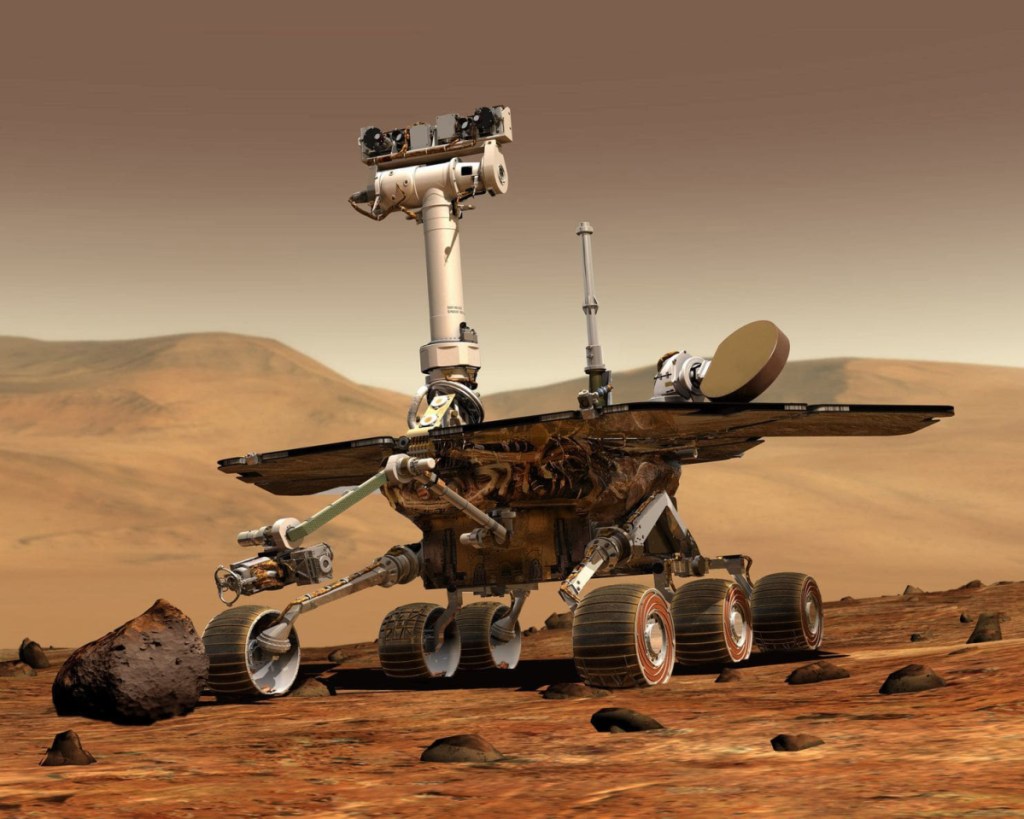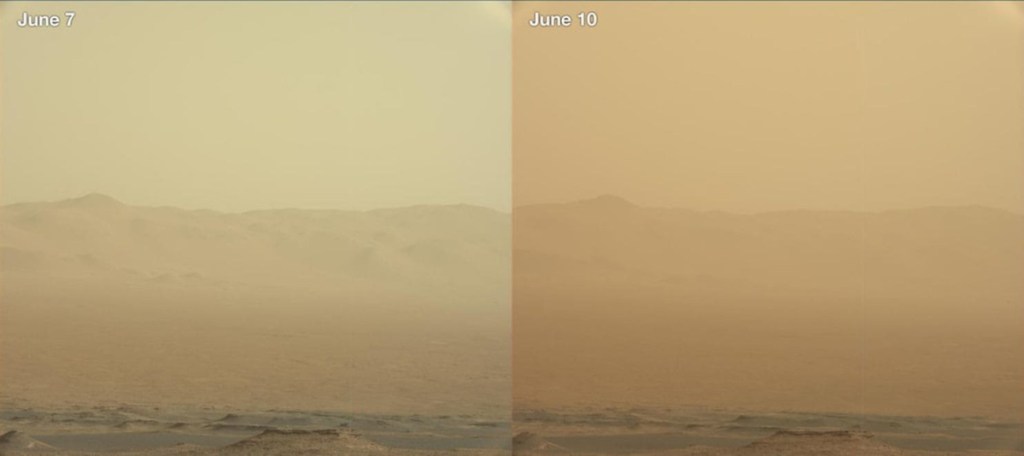For weeks, Mars has been besieged by a massive dust storm. A thick haze fills the atmosphere and blots out the sun, immersing much of the Red Planet in an impenetrable, perpetual night.
Caught in the middle of it all is NASA’s Opportunity rover, a five-foot-tall, bear-sized spacecraft that has already defied the odds by surviving on Mars more than 55 times longer than originally planned.
For the solar-powered robot, the dust is not as dangerous as the darkness. Since the storm began two weeks ago, the amount of light the spacecraft receives has dropped to less than 1 percent of normal levels. Energy production has fallen from hundreds of watt-hours a day to almost nothing. NASA has not heard from the rover since Tuesday.
This is a “spacecraft emergency,” Mars Exploration Rover project manager John Callas said Wednesday. His team is operating under the assumption that the charge in Opportunity’s batteries has dipped below 24 volts and that the rover has entered a low-power fault mode, when all subsystems except the mission clock are turned off.
The clock is programmed to rouse the rover at periodic intervals to check whether light levels are sufficient to wake up – a state called “solar groovy.” But the storm is still growing and should encircle the planet in a matter of days. NASA expects that it will be weeks, if not months, before the dust clears enough to allow the spacecraft to turn back on.
Though the rover is expected to survive the storm, “It’s like you have a loved one in a coma in the hospital,” Callas said. “The doctors are telling you, ‘You just gotta give it time and she’ll wake up.’ But if it’s your 97-year-old grandmother, you’re going to be very concerned, and by all means we are.”
Opportunity, along with Spirit, its twin, landed on the planet in 2004. Though the mission was only supposed to last 90 days, Opportunity is approaching its 15th year there. Before the storm began, it had been rolling down a channel called Perseverance Valley, which scientists think may have been carved by water billions of years ago.
NASA’s main worry now is that the rover’s batteries may freeze without the heat generated by its normal operations. Other problems may arise if the rover’s energy levels drop even further. That would trigger a “clock fault,” when the rover loses track of time entirely.
Fortunately for NASA, dust storms tend to trap radiation, preventing the kind of wild temperature swings that often occur on Mars. Callas also expressed faith in Opportunity’s batteries – even though they are 15 years old, they are still working at 85 percent of their capacity.
“They’re the finest batteries in the solar system. I wish my cellphone battery had half of that,” he said.
Local dust storms are a common occurrence on Mars – strong winds lift particles the size of talcum powder and carry them into the sky. The thin atmosphere makes these events different from storms on Earth; even the most powerful Martian winds couldn’t topple a rover.
Send questions/comments to the editors.





Success. Please wait for the page to reload. If the page does not reload within 5 seconds, please refresh the page.
Enter your email and password to access comments.
Hi, to comment on stories you must . This profile is in addition to your subscription and website login.
Already have a commenting profile? .
Invalid username/password.
Please check your email to confirm and complete your registration.
Only subscribers are eligible to post comments. Please subscribe or login first for digital access. Here’s why.
Use the form below to reset your password. When you've submitted your account email, we will send an email with a reset code.